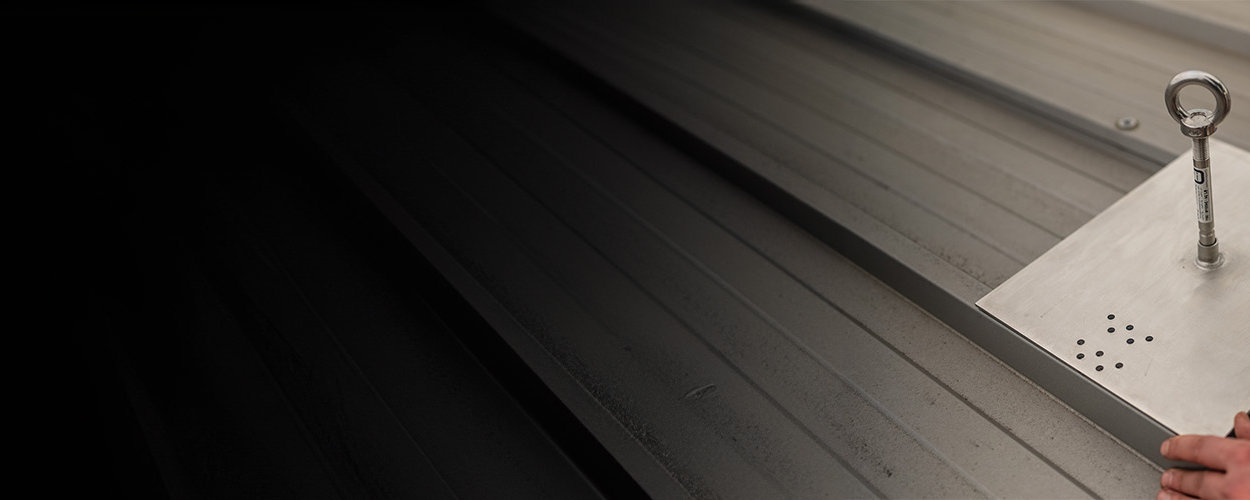Fall protection from SKB
Anchor points are generally used to prevent people from falling. Anchor points can be found on flat roofs, for example, and are used by roofers, industrial climbers or other professional groups who work on roofs to protect themselves from falling with the help of personal fall protection equipment (PPE). Just like lifeline systems, anchor points are individual protection systems.
Difference between anchor point and swivel anchor
Lifting points should not be confused with lifting swivels. Lifting swivels are used to lift heavy loads safely. However, they do not play a role in fall protection.
What requirements must an anchor point meet?
As anchor points are used as restraint and fall arrest systems, they can be subjected to large, jerky forces in an emergency. Anchor points must therefore be made of a robust material and have a high quality class. To ensure this quality, anchor points are tested and certified in Germany in accordance with DIN EN 795. Furthermore, a building authority approval (DiBt approval) is required for the installation of permanent anchor points. These two points ensure that the anchor points meet the requirements and thus provide the user with the highest possible level of safety!
However, a high-quality anchor point does not guarantee fault-free use. For this reason, the installation or fastening to the surface should be carried out by qualified personnel and the user should also be trained in handling anchorage devices and products of this type.
Please also note that when screwing in the eyebolt or ring nut of a single anchor point, the thread should be treated with threadlocker to secure the eyebolt.
How do you use the anchor point?
The user establishes a connection to the anchor point with their personal protective equipment (PPE). In most cases, anchor points are equipped with a stainless steel eyelet to which the user can attach their PPE, for example with a snap hook.
Anchor point as a restraint or fall arrest system
Anchor points can be used either to keep the user away from a danger zone (e.g. fall edge on roofs) or to “catch” the user in the event of a fall - similar to the classic safety system used when climbing. The preventive system is referred to as a restraint system, the latter as a fall arrest system.
Different versions of anchor points
Anchor points can be differentiated in terms of their load-bearing capacity (for example, our Primo products can transfer 6kN from the anchorage device to the structure when used by one person. This corresponds to approx. 612 kg) and the surface on which they can be mounted. We can offer you the right anchor point for almost any surface.
We offer anchor points for concrete, lightweight concrete, aerated concrete and pumice, prestressed concrete and hollow ceilings, wood, steel, sandwich panels, trapezoidal roofs, standing seams and mobile anchor points (load-bearing)
Further variants are available for each substrate, which differ in terms of safety-relevant features (e.g. maximum load-bearing capacity).
